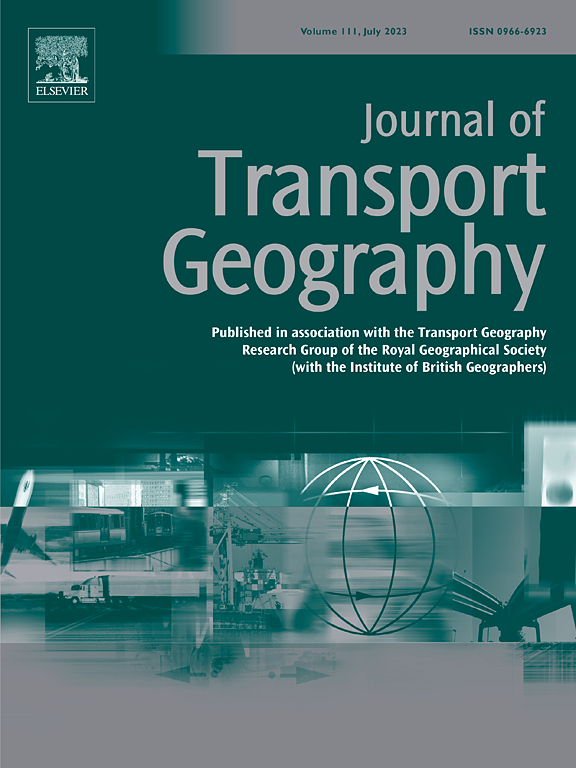Exploring the spatial distribution structure of intercity human mobility networks under multimodal transportation systems in China
IF 5.7
2区 工程技术
Q1 ECONOMICS
引用次数: 0
Abstract
Intercity human mobility drives the redistribution of resources and accelerates the coordination of urban agglomeration systems. Current intercity transportation systems tend to develop in multiple modes, while there are limited investigations into the distribution structure of multimodal mobility networks. We construct intercity mobility networks under different flows including highway, railway, aviation, and their combination employing nationwide mobility data in China. The spatial analysis approach for complex networks is utilized to conduct a series of quantitative investigations on intercity mobility. Our findings reveal both similarities and differences in the multidimensional spatial patterns and hierarchical structures of various networks. These networks exhibit various distance decay effects due to different geographic constraints, contributing to competition or complementarity in travel distances. The spatial distribution of centrality is relatively consistent across various networks but with more polarized natures for aviation. Notably, cities with the most connections in intercity mobility networks are not necessarily the most central, practically within the highway network. Further, the core city drives clustering effects with surrounding cities, facilitating the formation of communities that contribute to heterogeneous mobility patterns inside and outside. We examine the connection patterns within and between communities, revealing distinct roles for cities within these spatial association networks. These findings provide valuable insights into spatial interactions among cities and contribute to the formulation of reasonable urban development policies.
求助全文
约1分钟内获得全文
求助全文
来源期刊

Journal of Transport Geography
Multiple-
CiteScore
11.50
自引率
11.50%
发文量
197
期刊介绍:
A major resurgence has occurred in transport geography in the wake of political and policy changes, huge transport infrastructure projects and responses to urban traffic congestion. The Journal of Transport Geography provides a central focus for developments in this rapidly expanding sub-discipline.
 求助内容:
求助内容: 应助结果提醒方式:
应助结果提醒方式:


